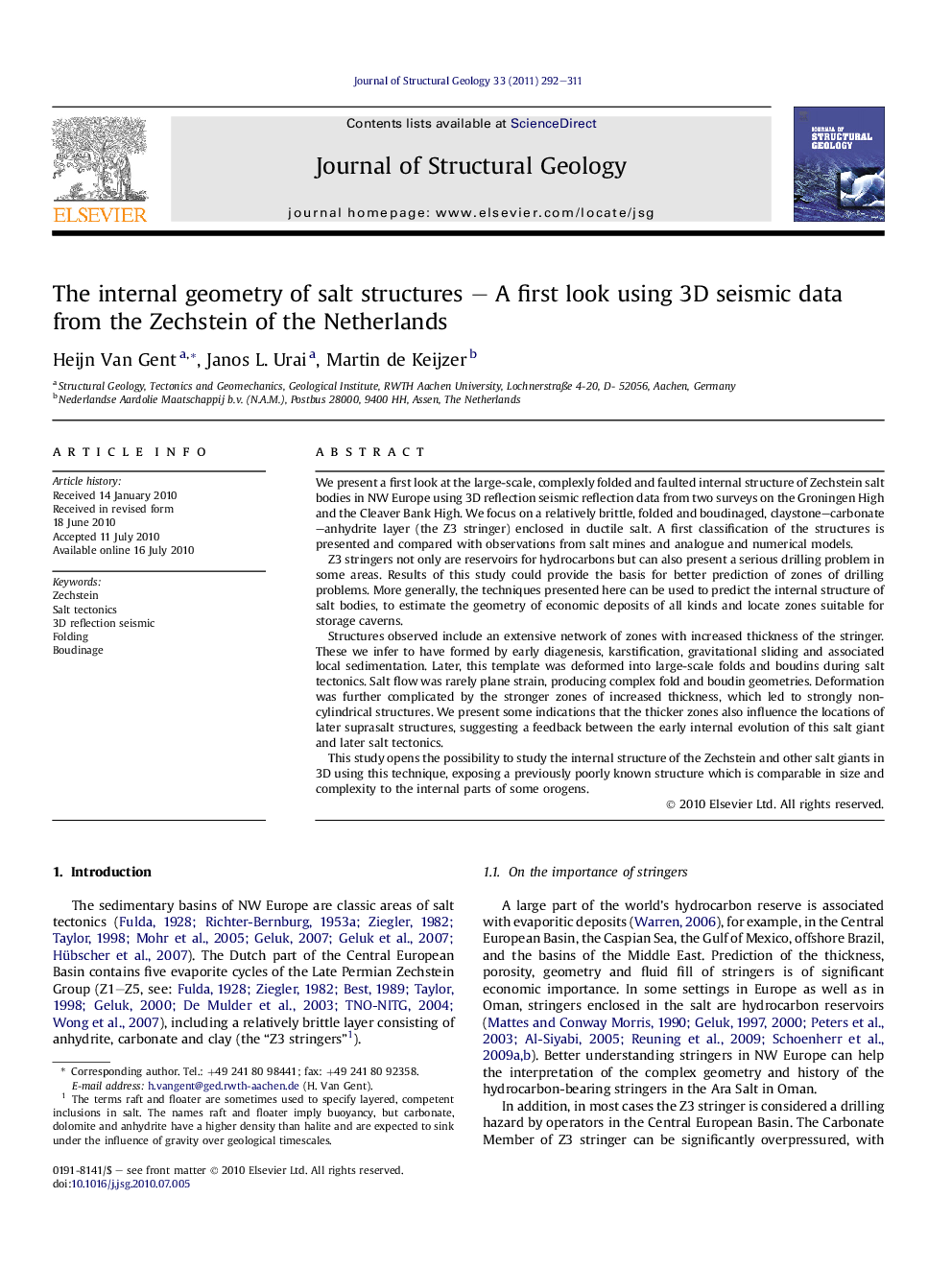| کد مقاله | کد نشریه | سال انتشار | مقاله انگلیسی | نسخه تمام متن |
|---|---|---|---|---|
| 4733564 | 1357036 | 2011 | 20 صفحه PDF | دانلود رایگان |

We present a first look at the large-scale, complexly folded and faulted internal structure of Zechstein salt bodies in NW Europe using 3D reflection seismic reflection data from two surveys on the Groningen High and the Cleaver Bank High. We focus on a relatively brittle, folded and boudinaged, claystone–carbonate–anhydrite layer (the Z3 stringer) enclosed in ductile salt. A first classification of the structures is presented and compared with observations from salt mines and analogue and numerical models.Z3 stringers not only are reservoirs for hydrocarbons but can also present a serious drilling problem in some areas. Results of this study could provide the basis for better prediction of zones of drilling problems. More generally, the techniques presented here can be used to predict the internal structure of salt bodies, to estimate the geometry of economic deposits of all kinds and locate zones suitable for storage caverns.Structures observed include an extensive network of zones with increased thickness of the stringer. These we infer to have formed by early diagenesis, karstification, gravitational sliding and associated local sedimentation. Later, this template was deformed into large-scale folds and boudins during salt tectonics. Salt flow was rarely plane strain, producing complex fold and boudin geometries. Deformation was further complicated by the stronger zones of increased thickness, which led to strongly non-cylindrical structures. We present some indications that the thicker zones also influence the locations of later suprasalt structures, suggesting a feedback between the early internal evolution of this salt giant and later salt tectonics.This study opens the possibility to study the internal structure of the Zechstein and other salt giants in 3D using this technique, exposing a previously poorly known structure which is comparable in size and complexity to the internal parts of some orogens.
Research highlights
► The internal structure of Zechstein salt deposits was mapped
► Different structures of several evolutionary stages are interpreted
► No conclusive evidence for significant gravity-induced sinking of stringers is found
► The internal geometry of salt structures results from non-plane strain deformation
► Early, internal structures seem to influence overburden sedimentation and deformation
Journal: Journal of Structural Geology - Volume 33, Issue 3, March 2011, Pages 292–311